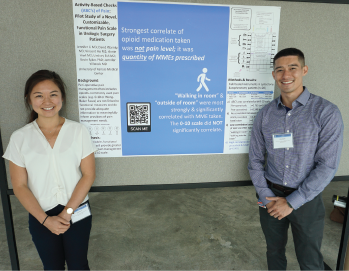7 Digital Micromoments
This is a short period of time in which someone accesses their smart device and quickly gleans information. “If someone has a few seconds or minutes to spare while riding an elevator or walking down the street, for example, they might click on a Twitter notification, check a social media thread, or send an email or text,” Dr. Johns said. These are all considered digital micromoments. “In today’s ocean of information, if you want to convey something, you need to be able to capitalize on digital micromoments, because that’s how people are consuming information.”
Explore This Issue
December 20198 Podcasts
This is an audio format for information that would traditionally be presented in writing. “Listeners can consume information at their preferred time and location, like a webinar,” Dr. Johns said. “Podcasts are gaining popularity with journals, medical societies, and specialty groups, who use them to present information to a broader audience around the world.”
Dr. Husain said a podcast is like a radio show that anyone can do without having a radio station affiliation. Podcasts involve recording a topic and then disseminating it free online. Users download it via an app such as iTunes or Spotify and then listen to it on a smartphone. Podcasts work well for sharing thoughts, ideas, and general interest stories. A downside is that it can be opinionated without necessarily being vetted for accuracy.

Medical students Jennifer Li and Vincent Bo with their minimalist poster at the Midwest Regional Pain Interest Group Meeting in Kansas City, Kansas. Interested viewers can scan a QR code with their smart device to get more information about a poster or its authors.
Credit: Jennifer Villwock, MD
9 Simulation
Simulation training involves the artificial representation of real events to achieve educational goals. Simulation provides the opportunity to learn and practice new skills and procedures in near-realistic situations without the risk of injuring a patient. “Simulation will play an increasing role in otolaryngology education in the future,” Dr. Simons said. It can be applied not only for training in a variety of surgical techniques, but also for education in interpersonal communication skills, team-based interactions, and challenging clinical scenarios. In the future, high-stakes simulation will likely also be used for administering board examinations, granting licensure, maintaining certification, and hospital privileging.
10 Serious Games and Gamification
Gamification involves applying game-design elements and game principles to non-game contexts. These games are developed for purposes other than purely entertainment. “Such games have been increasingly used for medical education, as they have the potential to be interactive, stimulating, challenging, and goal-oriented,” Dr. Simons said. Virtual reality and simulation can also be incorporated into games for medical education. Benefits include increasing learner satisfaction and keeping learners engaged and motivated. They can also be disseminated to a wide audience and allow for self-paced learning, repetition, and continual assessment.
As a new decade begins, technology will play an ever-increasing role in keeping up with educational demands. And with technological advances picking up speed, imagine how this list will change as 2030 approaches!